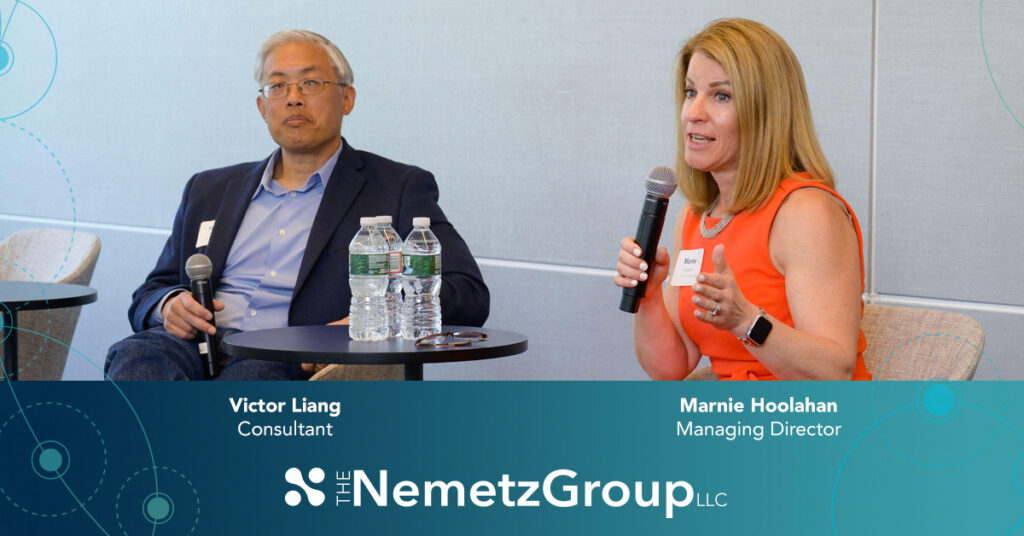Innovation in our industry is extraordinary on so many levels. The science is unparalleled, the collective intellect is exceptional, and the passion for the patient is unwavering. Mobilizing this innovation to discover, develop, and commercialize novel treatments for patients, all while building a company, can be a Herculean task.
When we work with emerging companies, we often begin by facilitating the discussion around the leadership’s aligned vision, mission, values, and strategy. The adage, “If you don’t know where you are going, any path will get you there,” applies to how we think about building companies and bringing novel treatments to patients — “any path” is not a plan.
Cross-functional leadership conversations and communications with the broader team establish the fundamental corporate context and represent a key part of the alignment strategy. This helps employees, partners, and investors to fully understand where the company is headed and how it will get there. Moving beyond the “one-hit wonder” (single asset company) is part of the context-setting and planning for the future.
With that in mind, in a recent panel discussion, I asked Marnie Hoolahan, Managing Director, and Victor Liang, Consultant, both with The NemetzGroup, to share their perspectives on key steps that help emerging companies define their future and build scenarios to evolve beyond just one program.

Our discussion included four interconnected recommendations:
#1: Define the Company Vision
A company vision serves as a guide to the organizational plans and strategies and provides enough specificity to support governance and decision-making processes. The vision inspires the organization to a greater purpose, so it should meet some basic criteria: actionable, specific, challenging, unique, and memorable. So, think BIG! In its best form, it will differentiate the company, appeal to employees to commit to the cause, and motivate members of the organization to achieve great things.
We often challenge leadership teams to differentiate the company vision to make the impact they desire. Uncovering assumptions and aligning the team to this future state are integral to the process.
Teams that have a common view of the future and are comprised of individuals who understand the high-impact opportunities when they join an early-stage company tend to have a much easier time working towards achieving the company vision.
#2: Foster Collaboration and Alignment
From the outset of vision development and strategic planning, it is important to anticipate how leadership will foster cross-functional collaboration in the organization to ensure alignment.
At its best, collaboration promotes a culture where opinions can be voiced and listened to and where decision-making considers contributions from diverse perspectives. Collaboration improves the organizational “think” to pursue a vision that will encompass the possibilities and reduce the risk that the company will become a one-hit wonder with fewer options for long-term survival.
#3: Define the Strategy
Organizations have a strategy, whether they formally define it or not. Mitigating the risk of being a one-hit-wonder requires a deliberate choice of one or a combination of scenarios to focus priorities:
Scenario A: Optimize the one asset you have and develop it for all the indications that it can possibly address. Develop plans that provide for indication expansion, new formulations, and in some therapeutic areas, potential application in combination regimens. Market insight is critical for this scenario to ensure the development aligns with patient needs and will be positioned in the competitive landscape.
Scenario B: Leverage the platform (if you have one), invest in research and discovery, and find other applications for the technology across various diseases. Partner the platform with strategic or geographic entities and either operate almost like a contract research organization or provide preferential exclusivity to larger, more vertically integrated biopharma organizations.
Scenario C: Do deals to bring in interesting assets or platforms that your company is uniquely positioned to develop. This option can be incorporated into both A and B for mutually beneficial arrangements.
#4: Leverage Experts
To ensure that you are not simply convincing each other how amazing your ideas are, we recommend gathering insight from external experts. These folks generally have an excellent understanding of the policy, market dynamics, near-term competitors, or even the unmet medical need.
Using the networks and relationships of your leadership team to pressure-test assumptions is a good place to begin. Outside strategic consulting expertise can also help you define the vision and strategy, set up processes, and recommend fit-for-purpose governance as you build your company.
Speak with industry-leading physicians treating the disease, payers managing reimbursement, and patients seeking treatments for their illness. These conversations should be high quality in terms of direction and insight, providing the perspective needed to validate your pathway or challenge your thinking. This will infuse greater confidence in the team and will continue the process of fostering collaboration and alignment across the organization.
Final Thoughts
Naturally, implementation of these four actions does not guarantee success. However, they are foundational elements that will help to minimize the probability of becoming a one-hit wonder.
P.S. For more on the topic of avoiding the one-hit wonder, listen to an excerpt of our panel discussion, here.